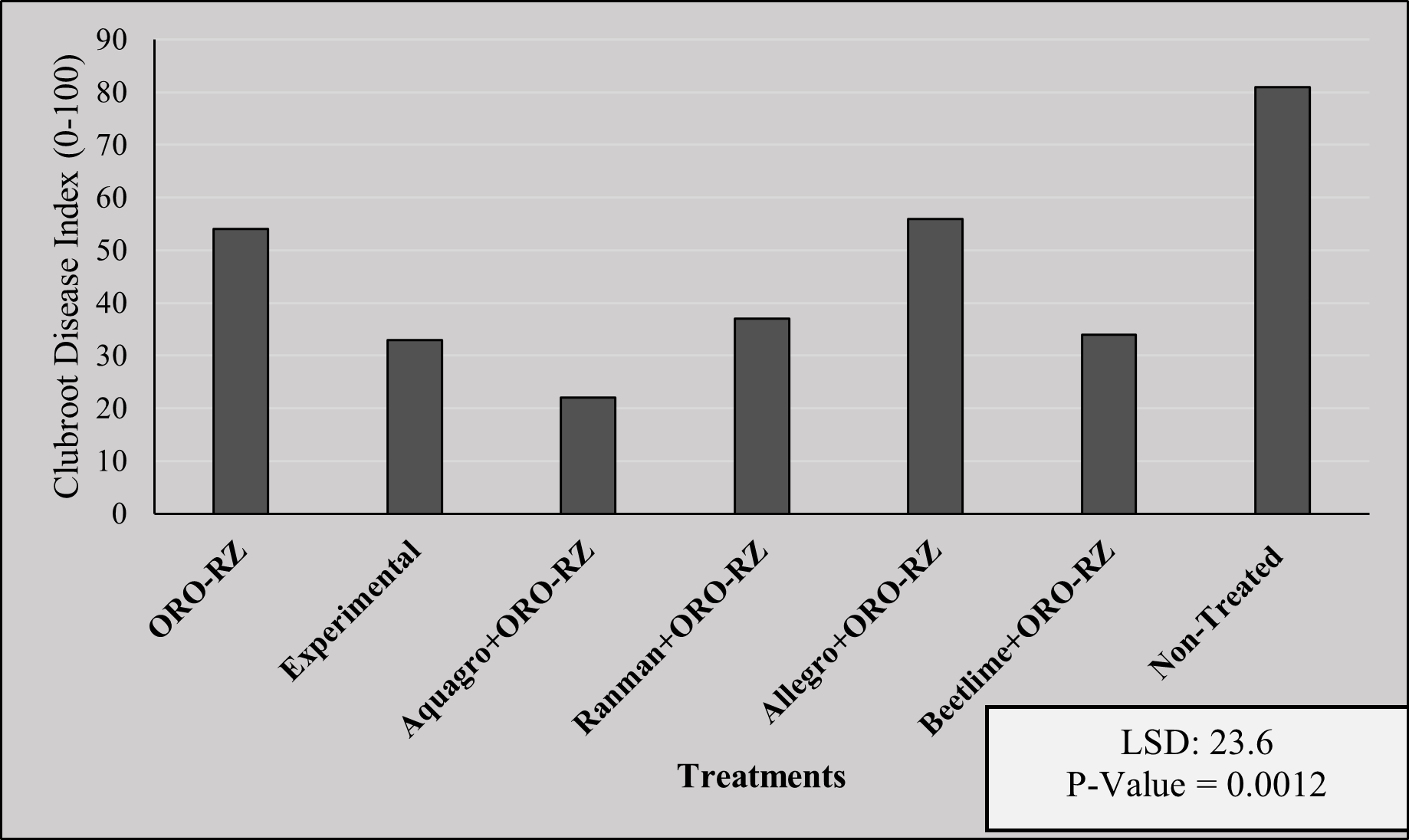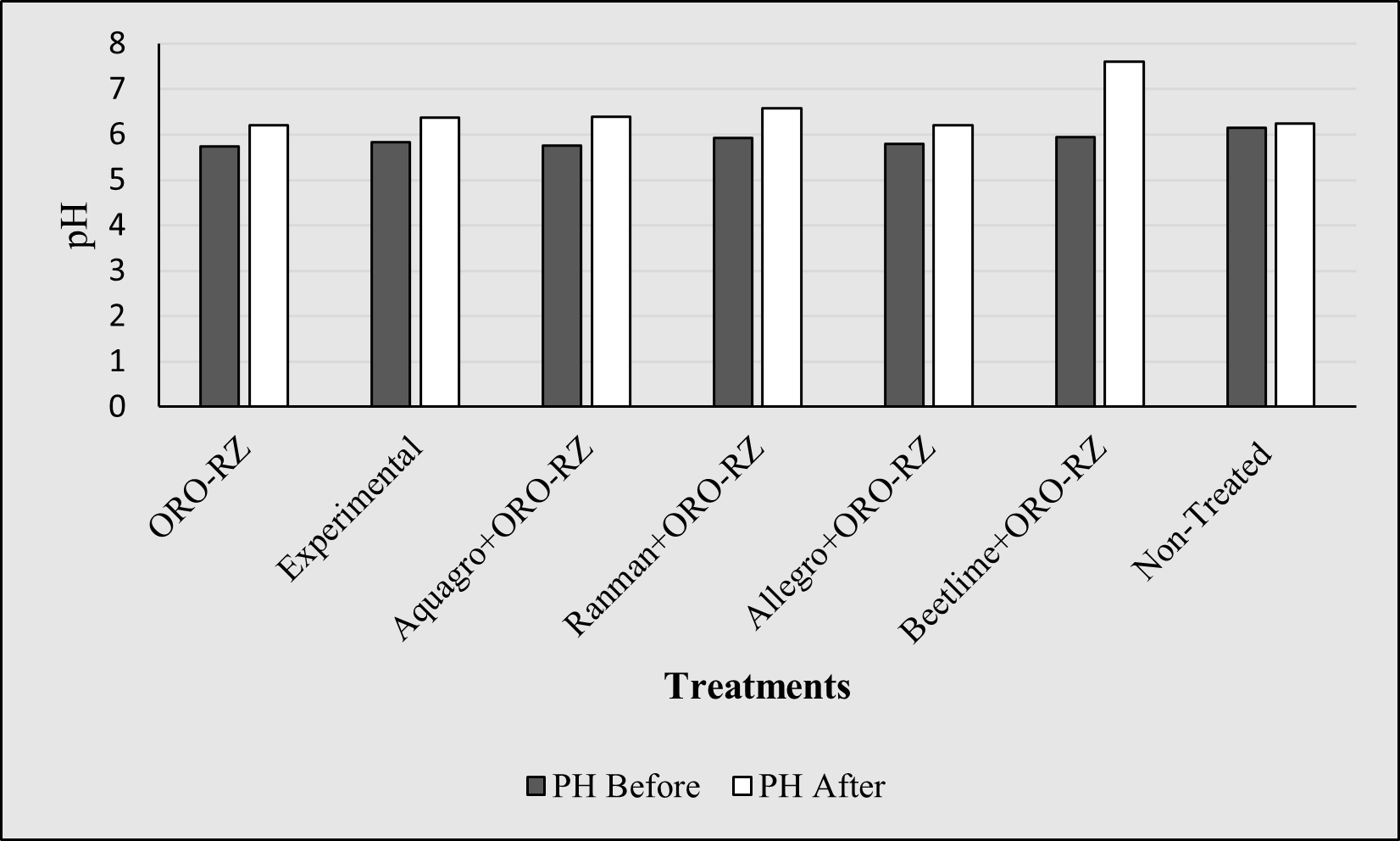Objective: To determine the effect of surfactant (ORO-79) alone, and in combination with fungicides and beet lime to manage clubroot on canola.
Methods: The following treatments (Table 1) were tested alone and along with a surfactant (ORO-79) in a randomized complete block design (RCBD) with four replications under field conditions. The field has natural soil population of P. brassicae of 5.5 million resting spores/g of soil. Treatments of ORO-79, an experimental, Ranman®, and Allegro® were applied in-furrow as soil drenches just before planting at the rate mentioned in Table 1. Whereas, beet lime was incorporated at a depth of 4-6 inches a week before planting. A susceptible canola cultivar to clubroot ‘DKL 30-42’ was planted at a depth of a half inch. Beet lime was acquired from American Crystal Sugar Company in Drayton, ND. The trial was planted the first week of June and was evaluated the first week of August (exactly 60 days after planting) at growth stage BBCH-65.
Rating scale: Clubroot rating scale: 0 = no galling, 1 = a few small galls (small galls on less than 1/3 of roots), 2 = moderate galling (small to medium-sized galls on 1/3 to 2/3 of roots), 3 = severe galling (medium to large-sized galls on more than 2/3 of roots). This rating scale was used for disease ratings of incidence and severity. A Clubroot Disease Index (CRDI) has been calculated using the incidence and severity data of clubroot samples obtained.
Soil sampling to determine pH: Soil samples were collected from all the plots before application of soil treatments and on the day of clubroot evaluations to know the effect of unit change in pH and their impact on clubroot control.
Table 1: List of treatments and the rates at which they were applied in soil.
Treatments | Rate |
|---|
ORO-RZ | 32 oz/a |
Experimental | 10 oz/a |
Aquagro + ORO-RZ | 15.5g per 5ft row+ 32 oz/a |
Ranman + ORO-RZ | 25 + 32 oz/a |
Allegro + ORO-RZ | 11.6 ml/2litres + 32 oz/a |
Beet lime + ORO-RZ | 7.5 t/ha + 32 oz/a |
Non-Treated | Check |
Figure 1: Mean clubroot disease index (CRDI) observed on application of various in-furrow applied treatments.
*Bars followed by the same letter are not significantly different according to the LSD test (p ≤ 0.05).
Figure 2: Observed change in soil pH before and after application of the treatments.
Results: The clubroot disease indexes (CRDI) of all the tested treatments were significantly different from the non-treated check (81%). A combination treatment of two surfactants (Aquagro + ORO-RZ) had lower CRDI (22%) followed by a new experimental biological alone (33%), Beet lime + ORO-RZ (34%) and Ranman + ORO-79 (37%) (Figure 1). These results indicate that the surfactants and biological products can be considered for patch management of clubroot on canola in solo or in combination.
Soil pH: The treatment of beet lime + ORO-RZ showed a significant increase of 1.6 units of pH compared to before application.

